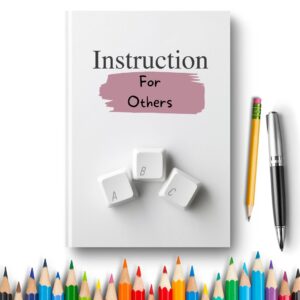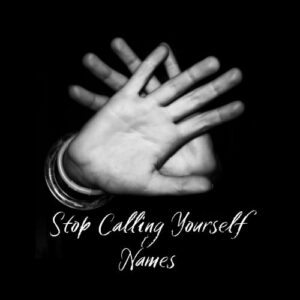Have you ever noticed how it’s easier to see others’ problems and wrong turns than your own? It’s seductive to believe we know what others should and shouldn’t do, and it can be hard not to give our opinions. It can be hard to resist the urge to give our opinions when we’re not asked or even suspect our advice is not wanted, especially with those we care about. When asked why we do this, most people say they’re just trying to help. But a closer look can reveal a far more self-referenced motivation.
Humans have a natural aversion to pain and discomfort. The ability to process negative emotion is a skill few of us have or even know is possible. This is one of the reasons learning how to process negative emotions is part of my online program. Map onto this a capacity for empathy, for being affected by another’s experience, and we confront a dilemma when exposed to others’ suffering.
Think of your reaction when you see someone hurting. Do you feel an impulse to try to help them feel better? If so, you are in good company. Yet how often does your effort to help actually have the intended effect? Things can go awry when helping belies an unconscious attempt to relieve our own discomfort. In these situations, the solutions we promote are fueled by a primary desire to alleviate our own distress. If you’ve even been on the receiving end of someone trying to fix our feelings you know just how dismissive and disconnecting it can feel.
It’s easy to misunderstand another’s struggle as a request for direction. In truth, mostly what we need in times of distress is a place to share and to feel less alone, at least initially.
Negative emotions are part of the human experience, not problems to be fixed.
This is not to negate the value of advice or guidance, which can be important, but only after being heard, seen and accepted for where we are. When we try to assuage someone’s distress as a way to ameliorate our own, our efforts come at the expense of connection or empathy and can result in amplifying emotional pain all around.
When you want someone to stop suffering, you have to be willing to do the work to free yourself from suffering so you can show them how.
Here are some do’s and don’ts when it comes to helping:
DONT’S
Cheerleading: This is when we try to lighten the mood by convincing the other person to adopt a more positive assessment of themselves, usually one you hold and want them to as well.
Examples:
You’re such an amazing person and there’s so much to look forward to.
You feel rejected now but you have so much love to give and the right person is just around the corner.
Don’t let the turkeys get you down.
Silver Lining: This is when we try to introduce a positive perspective prematurely in an attempt to dial down our own discomfort by “helping” another see that it’s “not that bad”.
Examples:
It could be worse.
At least you don’t have it as bad as _____
You’ll look back on this and be glad it happened.
Problem Solving: Because we have a tendency to see negative emotions as a problem to solve, most of us fall into this trap both with ourselves and others. But as I teach in my course, negative emotions are part of being human and an important part of experiencing the depth and breadth of a satisfying life. .
Examples:
Have you tried doing this?
Here’s what I think you should do.
I’ll send you some articles you need to read.
Discounting: Being on the receiving end of this one can really sting because it feels so dismissive. We resort to discounting when we feel either emotionally flooded or shut down ourselves. Unable to regulate our own distress we fall back on a response that will get the other person to stop sharing theirs.
Examples:
It’s over; there’s no point in getting upset about it now because it won’t change anything.
You just need to snap out of it.
It’s time to move on.
Pain Comparing: We think we’re trying to help by getting the other person to see that their situation is not as bad as they think. Pain comparing can also come from a misguided attempt to relate to the other person and help them not feel alone. Instead, it serves to buffer ourselves against another’s distress by minimizing it. While this approach can give the helper some relief, the helpee is left feeling bad about feeling bad.
Examples:
You think what you’re going through is bad, my divorce was way worse.
I know you had a miscarriage, but my daughter can’t even get pregnant.
Let me tell you what happened when the same thing happened to me.
If you truly want to be helpful to someone in emotional distress, try these out instead:
DOS
Inquiry: When trying to help someone, a good rule of thumb is to ask more questions and make fewer statements.
Examples:
What’s this like for you?
Am I hearing you right? Do you want to talk about it?
What does support look like for you right now? I can listen, I can offer thoughts, how can I be most helpful right now?
Validation: This is a way of communicating that you get what’s happening for the other person. Here you convey acknowledgment and acceptance of their present-tense experience
Examples:
It makes sense that you’re upset about this.
I can see why you’re angry, confused, hurt, etc.
This sounds like such a hard time for you.
“We need to dispel the myth that empathy is “walking in someone else’s shoes.” Rather than walking in your shoes, I need to learn how to listen to the story you tell about what it’s like in your shoes and believe you even when it doesn’t match my experiences.”
― Brené Brown, Atlas of the Heart: Mapping Meaningful Connection and the Language of Human Experience
Reflecting: When you are the one doing the reflection be forewarned it can feel awkward to reflect on what someone is saying. Say it anyway. We underestimate the value of hearing our words reflected back to us. sometimes. In fact, just hearing our own words out loud can be a powerful catalyst in helping to organize our thoughts and find clarity and focus.
Examples:
So you’re saying…
What I hear you telling me is…
What you’re saying is important so let me make sure I’m hearing you right…
“We need to dispel the myth that empathy is “walking in someone else’s shoes.” Rather than walking in your shoes, I need to learn how to listen to the story you tell about what it’s like in your shoes and believe you even when it doesn’t match my experiences.”
― Brené Brown, Atlas of the Heart: Mapping Meaningful Connection and the Language of Human Experience
Reflecting: When you are the one doing the reflection be forewarned it can feel awkward to reflect on what someone is saying. Say it anyway. We underestimate the value of hearing our words reflected back to us. sometimes. In fact, just hearing our own words out loud can be a powerful catalyst in helping to organize our thoughts and find clarity and focus.
Examples:
So you’re saying…
What I hear you telling me is…
What you’re saying is important so let me make sure I’m hearing you right…
Self-disclosure: Letting the other person know how you feel about what they’re sharing with you can be connecting.
Examples:
I feel sad you’re going through this.
I’m sorry this happened.
I feel helpless and wish there was more I could do.
I don’t know what to say.
Making Space: Just letting someone talk without interruption or comment can be healing. Often we feel compelled to do something or say something. It can be uncomfortable to hear someone talk about their distress, but giving space for someone’s words can have a calming and supportive effect. In addition to just letting the other person share, you can offer non-verbal cues of connection like making eye contact, nodding your head, matching their body posture.



